HP ZBook Fury 15 G7 review – massive amounts of supported memory and storage
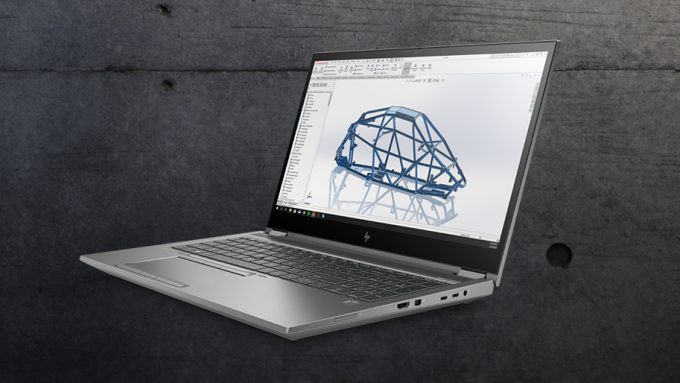 Not a while ago we showed you a laptop that was trying to be a mobile workstation and ultimately sat between the truly beast models, and those that make compromises on both the CPU and the GPU end.
Not a while ago we showed you a laptop that was trying to be a mobile workstation and ultimately sat between the truly beast models, and those that make compromises on both the CPU and the GPU end.
Well, now, we have something even more powerful – the HP ZBook Fury 15 G7, which (when specced up), looks as scary as its price tag. The top-tier model features a Xeon W-10885M and an NVIDIA Quadro RTX 5000 Max-Q. Not only that, but this device can hold up to a whopping 128GB of memory (64GB if you need ECC RAM). It is also interesting that some regions will receive the laptop with an AMD GPU, instead of NVIDIA.
Sure, it has all the security options you need, after all, it is a “workstation” and it has to keep your work safe. And to hold your work, there is support for up to 10TB of storage.
Now, let’s see how the whole package actually does its job because, on paper, it is more than impressive.
You can check the prices and configurations in our Specs System: https://laptopmedia.com/series/hp-zbook-fury-15-g7/
Contents
Specs Sheet
- GPU
- NVIDIA Quadro T2000 (4GB GDDR5) #199 in Top GPUs NVIDIA Quadro P620 (4GB GDDR5) #227 in Top GPUs Intel UHD Graphics 630 #262 in Top GPUsNVIDIA Quadro T1000 (4GB GDDR5) NVIDIA Quadro RTX 5000 (16GB GDDR6, Laptop) NVIDIA Quadro RTX 4000 (8GB GDDR6) NVIDIA Quadro RTX 3000 (6GB GDDR6) AMD Radeon RX 5500M (4GB GDDR6) AMD Radeon Pro 5500M (4GB GDDR6)
- HDD/SSD
- bis zu 8000GB SSD + bis zu 2000GB HDD
- M.2 Slot
- Up to 4x M.2 NVMe
- RAM
- up to 128GB
- OS
- Windows 10 Pro
- Batterie
- 94Wh, 8-cell, 94Wh, 6-cell
- Abmessungen
- 357 x 242.5 x 25.9 mm (14.06" x 9.55" x 1.02")
- Gewicht
- 2.42 kg (5.3 lbs)
- Ports und Konnektivität
- 1x USB Type-A
- 3.2 Gen 1 (5 Gbps)
- 1x USB Type-A
- 3.2 Gen 1 (5 Gbps), Sleep and Charge
- 2x USB Type-C
- Thunderbolt 3, Power Delivery (PD), Sleep and Charge
- HDMI
- 2.0b
- Displayport mini
- Kartenleser
- SD
- Ethernet LAN
- 10, 100, 1000 Mbit/s
- Wi-Fi
- 802.11ax
- Bluetooth
- 5.0
- Audio-Buchse
- 3.5 Combo Jack
- Merkmale
- Fingerabdruckleser
- optional
- Web-Kamera
- HD
- Beleuchtete Tastatur
- Mikrofon
- Dual Array Digital Microphone
- Lautsprecher
- 2x Stereo Speakers, Bang & Olufsen
- Optisches Laufwerk
Alle HP ZBook Fury 15 G7 Konfigurationen
What’s in the box?
Inside the package, there is a 150W power brick, as well as some paper manuals, and the laptop, protected by an antistatic bag.
Design and construction
Although the overall feel in the hands of this notebook reminds us of the older gaming notebooks, especially the Acer Predator 15 G9 series, it is actually significantly lighter, starting at only 2.35 kg. As far as the thickness goes, the laptop measures about 25.9mm. Indeed the entire structure feels bulky by today’s standards, but we have to say that both the base and the lid are extremely rigid.
Once you open the lid (which can be done with a single hand), you are going to see the matte display, which is surrounded by pretty thin bezels, especially compared to the last generation. Hiding inside the top bezel is the 720p Web camera with the IR face recognition sensor. Also, you can find the privacy shutter with its switch being a bit uncomfortable to grip, unless you use your nails, thus favoring data analysts who look after their manicure.
Moving to the base we see the front-firing speakers, hidden beneath a grill just above the keyboard. As for the keyboard, itself, it is a spill-resistant, backlit unit with a NumberPad section. It has good key travel, clicky feedback, and at the same time, it has almost no deck flex – insane.
In addition to that there is a proprietory Nipple in the middle of the deck, and the touchpad… well, it looks out of this world. Not only are there three dedicated buttons for the TrackPoint, itself, but there are three more for the touchpad. And they are satisfying to click, as well. Moreover, the unit features a glass cover, which provides supreme tracking, and thanks to black sorcery, there is no observable input lag, making it probably the best touchpad on the market (excluding Apple devices).
If you turn the laptop upside down, you will see the ventilation grill. As for the hot air, it escapes through a couple of vents on the back.
Ports
On the left side, there is an RJ-45 connector, followed by a security slot, two USB Type-A 3.2 (Gen. 1) ports, an audio jack, and a Smart Card reader. Then, on the left, there is the power plug, two Thunderbolt 3 connectors, a Mini DisplayPort 1.4, an HDMI 2.0b connector, and an SD card reader.
Disassembly, upgrade options and maintenance
Accessing this laptop’s internals is extremely easy. Just flick the slider on the bottom panel, and slide the panel away from the chassis. Then, you can unplug the 94Wh battery pack with the help of two further sliders.
Storage-wise, there is a maximum of four M.2 PCIe slots, which is insane. However, two of them require an adapter, which HP sells separately. Otherwise, you can connect a 2.5-inch SATA device in their place. So, when it comes to memory, there are a total of four RAM SODIMM slots. Two are accessible from the bottom, while the other two are located beneath the keyboard. The total amount of memory supported is 128GB of non-ECC, and 64GB of ECC.
To access two of the SODIMM slots, and one M.2 slot, you need to remove the keyboard. To do so, you have to undo 3 marked Phillips-head screws, and then push on the open space around one of the fans. Before you proceed, make sure you have unplugged the black and orange connector from the touchpad. Then, reattach the bottom panel, turn the laptop around, and carefully pry the keyboard with a plastic tool. Keep in mind that there are two further ribbon cables that need to be removed – one for the backlight, and one for the keyboard, itself.
While HP states, that this device will come with a vapor chamber cooling solution, we suppose that it will only feature on the top tier specs, since ours had a more conventional design, including a couple of heat pipes.
Display quality
HP ZBook Fury 15 G7 comes with a Full HD IPS panel, model number Innolux N156HCA-GA3 (CMN15F6). Its diagonal is 15.6″ (39.62 cm), and the resolution – 1920 х 1080p. Additionally, the screen ratio is 16:9, the pixel density – 142 ppi, their pitch – 0.18 x 0.18 mm. The screen can be considered Retina when viewed from at least 60 cm (from this distance, the average human eye can’t see the individual pixels).

The viewing angles are good. We offer images at different angles to evaluate the quality.

The maximum measured brightness is 460 nits (cd/m2) in the middle of the screen and 450 nits (cd/m2) average across the surface with a maximum deviation of 13% in the bottom left corner. The Correlated Color Temperature on a white screen and at maximum brightness is 6700K (average) – slightly colder than the 6500K optimum for sRGB.
In the illustration below you can see how the display performs from a uniformity perspective. The illustration below shows how matters are for operational brightness levels (approximately 140 nits) – in this particular case at 68% Brightness (White level = 146 cd/m2, Black level = 0,12 cd/m2).
Values of dE2000 over 4.0 should not occur, and this parameter is one of the first you should check if you intend to use the laptop for color-sensitive work (a maximum tolerance of 2.0 ). The contrast ratio is good – 1350:1.
To make sure we are on the same page, we would like to give you a little introduction to the sRGB color gamut and the Adobe RGB. To start, there’s the CIE 1976 Uniform Chromaticity Diagram that represents the visible specter of colors by the human eye, giving you a better perception of the color gamut coverage and the color accuracy.
Inside the black triangle, you will see the standard color gamut (sRGB) that is being used by millions of people on HDTV and on the web. As for the Adobe RGB, this is used in professional cameras, monitors, etc for printing. Basically, colors inside the black triangle are used by everyone and this is the essential part of the color quality and color accuracy of a mainstream notebook.
Still, we’ve included other color spaces like the famous DCI-P3 standard used by movie studios, as well as the digital UHD Rec.2020 standard. Rec.2020, however, is still a thing of the future and it’s difficult for today’s displays to cover that well. We’ve also included the so-called Michael Pointer gamut, or Pointer’s gamut, which represents the colors that naturally occur around us every day.
The yellow dotted line shows HP ZBook Fury 15 G7’s color gamut coverage.
Its display is limited just to 95% of the sRGB/ITU-R BT.709 (web/HDTV standard) in CIE1976.
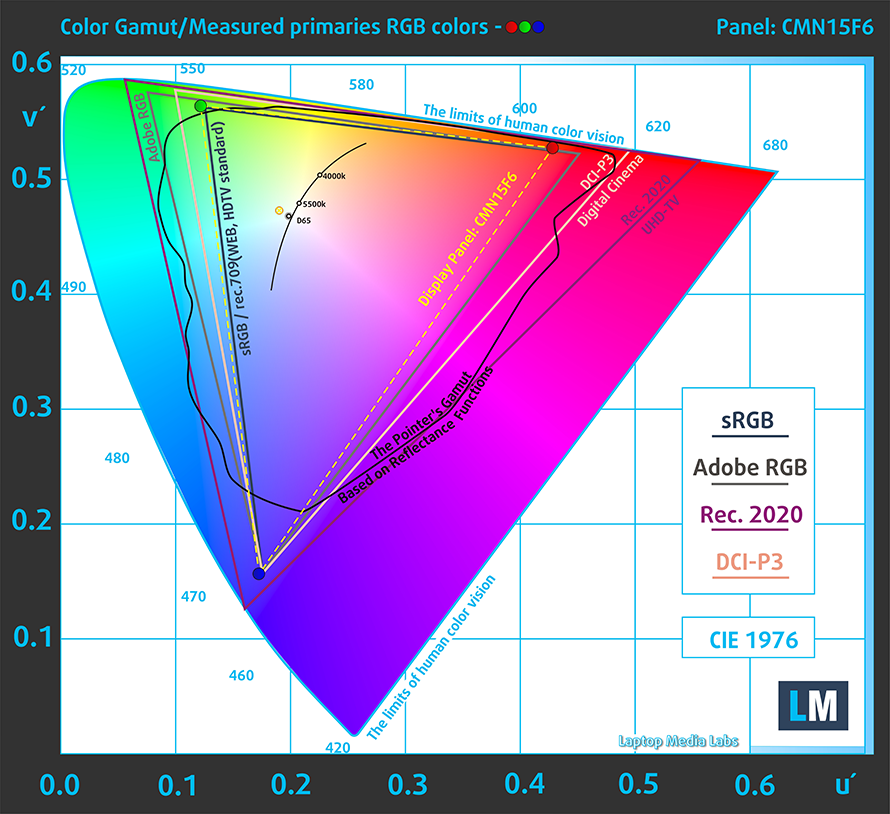
Our “Design and Gaming” profile delivers optimal color temperature (6500K) at 140 cd/m2 luminance and sRGB gamma mode.
We tested the accuracy of the display with 24 commonly used colors like light and dark human skin, blue sky, green grass, orange, etc. You can check out the results at factory condition and also, with the “Design and Gaming” profile.
Below you can compare the scores of HP ZBook Fury 15 G7 with the default settings (left), and with the “Gaming and Web design” profile (right).
The next figure shows how well the display is able to reproduce really dark parts of an image, which is essential when watching movies or playing games in low ambient light.
The left side of the image represents the display with stock settings, while the right one is with the “Gaming and Web Design” profile activated. On the horizontal axis, you will find the grayscale, and on the vertical axis – the luminance of the display. On the two graphs below you can easily check for yourself how your display handles the darkest nuances but keep in mind that this also depends on the settings of your current display, the calibration, the viewing angle, and the surrounding light conditions.

Response time (Gaming capabilities)
We test the reaction time of the pixels with the usual “black-to-white” and “white-to-black” method from 10% to 90% and vice versa.
We recorded Fall Time + Rise Time = 24 ms.

After that, we test the reaction time of the pixels with the usual “Gray-to-Gray” method from 50% White to 80% White and vice versa between 10% and 90% of the amplitude.

Health impact – PWM / Blue Light
PWM (Screen flickering)
Pulse-width modulation (PWM) is an easy way to control monitor brightness. When you lower the brightness, the light intensity of the backlight is not lowered, but instead turned off and on by the electronics with a frequency indistinguishable to the human eye. In these light impulses, the light/no-light time ratio varies, while brightness remains unchanged, which is harmful to your eyes. You can read more about that in our dedicated article on PWM.
HP ZBook Fury 15 G7’s backlight utilizes PWM for brightness adjustment up to 120 nits. Thankfully, the frequency of the flickerings is high-enough, to make it rather safe for long periods of use.
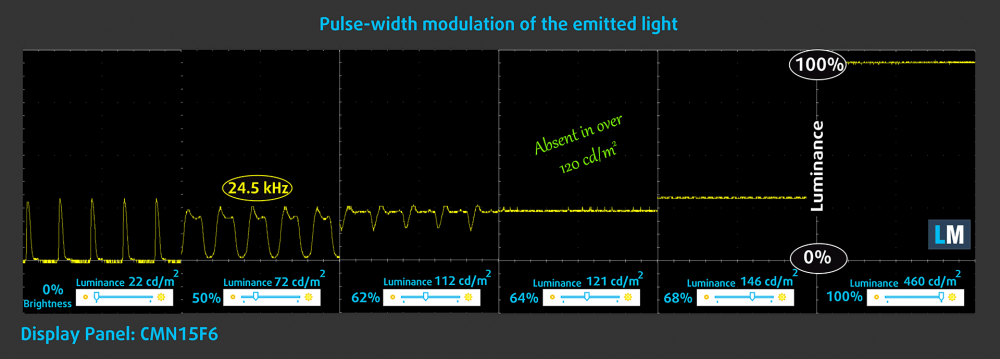
Blue light emissions
Installing our Health-Guard profile not only eliminates PWM but also reduces the harmful Blue Light emissions while keeping the colors of the screen perceptually accurate. If you’re not familiar with the Blue light, the TL;DR version is – emissions that negatively affect your eyes, skin, and your whole body. You can find more information about that in our dedicated article on Blue Light.
Conclusions
HP ZBook Fury 15 G7’s IPS panel in the configuration we tested has a Full HD resolution, comfortable viewing angles, good contrast ratio, and pretty wide color coverage (95% of the sRGB gamut). Moreover, its backlight doesn’t flicker above 120 nits, and below this value, the modulations are with very high frequency. If you are a content creator you would be happy to see that the color accuracy of this panel is pretty high thanks to our Gaming and Web design profile. Unfortunately, the color uniformity of our particular unit was not really homogenous, thus the laptop comes inappropriate for professional work.
Buy our profiles
Since our profiles are tailored for each individual display model, this article and its respective profile package are meant for HP ZBook Fury 15 G7 configurations with 15.6″ Innolux N156HCA-GA3 (CMN15F6) (FHD, 1920 × 1080) IPS.
*Should you have problems with downloading the purchased file, try using a different browser to open the link you’ll receive via e-mail. If the download target is a .php file instead of an archive, change the file extension to .zip or contact us at [email protected].
Read more about the profiles HERE.
Mit dem Kauf von LaptopMedia-Produkten erhalten Sie nicht nur effiziente und gesundheitsschonende Profile, sondern Sie unterstützen auch die Entwicklung unserer Labore, in denen wir Geräte testen, um möglichst objektive Testberichte zu erstellen.

Büroarbeit
Office Work sollte vor allem von Benutzern verwendet werden, die die meiste Zeit mit dem Betrachten von Textstücken, Tabellen oder einfach nur mit dem Surfen verbringen. Dieses Profil zielt darauf ab, durch Beibehaltung einer flachen Gammakurve (2,20), einer nativen Farbtemperatur und wahrnehmungsgerechten Farben eine bessere Deutlichkeit und Klarheit zu liefern.

Design und Spiele
This profile is aimed at designers who work with colors professionally, and for games and movies as well. Design and Gaming takes display panels to their limits, making them as accurate as possible in the sRGB IEC61966-2-1 standard for Web and HDTV, at white point D65.

Gesundheitsschutz
Health-Guard eliminiert die schädliche Pulsweitenmodulation (PWM) und reduziert das negative blaue Licht, das unsere Augen und unseren Körper beeinflusst. Da er für jedes Panel maßgeschneidert ist, schafft er es, die Farben wahrnehmungsgetreu zu halten. Health-Guard simuliert Papier, so dass der Druck auf die Augen stark reduziert wird.
Erhalten Sie alle 3 Profile mit 33% Rabatt
Sound
HP ZBook Fury 15 G7 has one of the best speakers on the market. They are loud, deep, and dynamic, and lack deviations across the entire frequency spectrum.
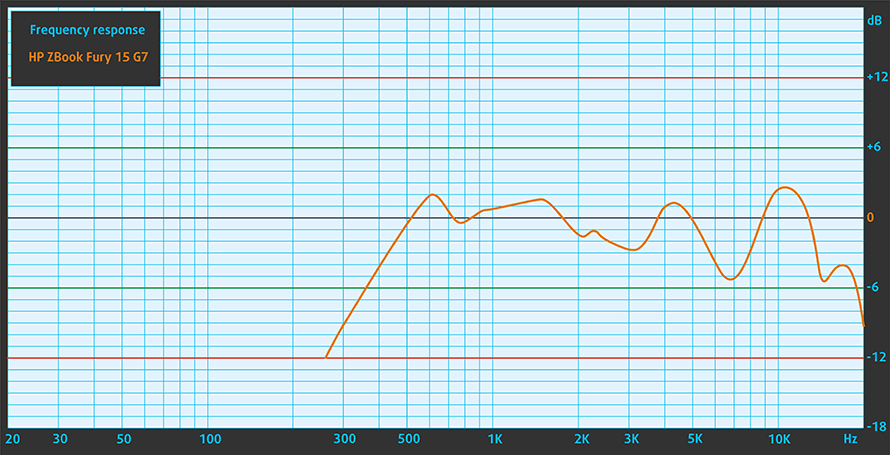
Drivers
All of the drivers and utilities for this notebook can be downloaded from here: https://support.hp.com/us-en/drivers/selfservice/hp-zbook-fury-15-g7-mobile-workstation/34386154
Battery
Now, we conduct the battery tests with Windows Better performance setting turned on, screen brightness adjusted to 120 nits and all other programs turned off except for the one we are testing the notebook with. This notebook’s 94Wh battery pack lasts for 16 hours and 53 minutes of Web browsing, and 14 hours of video playback.
Um reale Bedingungen zu simulieren, haben wir unser eigenes Skript zum automatischen Durchsuchen von über 70 Websites verwendet.
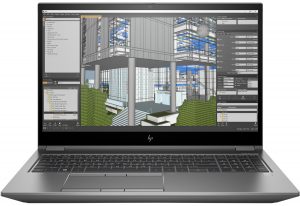
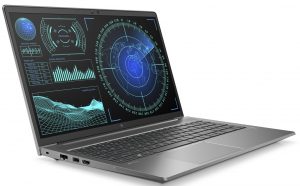
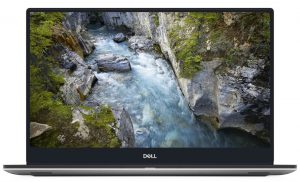
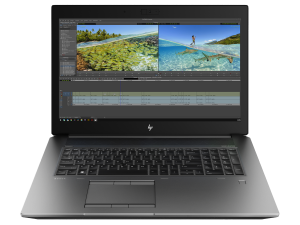
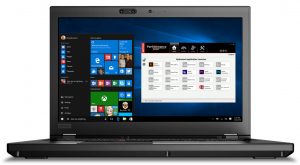
Für jeden Test dieser Art verwenden wir das gleiche Video in HD.





CPU options
For the processor choice, you get pretty much the entire Comet Lake-H lineup. This includes the Core i5-10300H, Core i7-10750H, Core i7-10850H, Core i9-10885H, and the Xeon W-10885M.
Die Ergebnisse stammen aus dem Cinebench 20 CPU-Test (je höher die Punktzahl, desto besser)
Die Ergebnisse stammen aus unserem Photoshop-Benchmark-Test (je niedriger die Punktzahl, desto besser)
HP ZBook Fury 15 G7 CPU-Varianten
Hier sehen Sie einen ungefähren Vergleich zwischen den CPUs, die in den HP ZBook Fury 15 G7-Modellen auf dem Markt zu finden sind. Auf diese Weise können Sie selbst entscheiden, welches Modell der [Serie] das beste Preis-Leistungs-Verhältnis bietet.
Hinweis: Die Tabelle zeigt die günstigsten verschiedenen CPU-Konfigurationen, so dass Sie überprüfen sollten, was die anderen Spezifikationen dieser Laptops sind, indem Sie auf den Namen des Laptops / CPU.
Die Ergebnisse stammen aus dem Cinebench R23 CPU-Test (je höher die Punktzahl, desto besser)
Die Ergebnisse stammen aus unserem Photoshop-Benchmark-Test (je niedriger die Punktzahl, desto besser)
GPU options
And for the graphics, there are also a ton of options. So, there are two AMD devices – the Radeon RX 5500M, and the Radeon Pro W5500M. If you prefer team Green, then, you can choose from the Quadro T1000 Max-Q, T2000 Max-Q, RTX 3000, RTX 4000 Max-Q, and RTX 5000 Max-Q. And before you get your hypes up when you see the 5000 number after RTX, it is just the professional version of the GeForce RTX 2080 Super Max-Q.
Die Ergebnisse stammen aus dem 3DMark: Time Spy (Graphics) Benchmark (je höher die Punktzahl, desto besser)
Die Ergebnisse stammen aus dem 3DMark: Fire Strike (Grafik) Benchmark (je höher die Punktzahl, desto besser)
Die Ergebnisse stammen aus dem Unigine Superposition Benchmark (je höher die Punktzahl, desto besser)
HP ZBook Fury 15 G7 GPU-Varianten
Hier sehen Sie einen ungefähren Vergleich zwischen den GPUs, die in den HP ZBook Fury 15 G7-Modellen auf dem Markt zu finden sind. Auf diese Weise können Sie selbst entscheiden, welches Modell der [Serie] das beste Preis-Leistungs-Verhältnis bietet.
Hinweis: Die Tabelle zeigt die günstigsten unterschiedlichen GPU-Konfigurationen, daher sollten Sie die anderen Spezifikationen dieser Laptops überprüfen, indem Sie auf den Namen des Laptops /GPU klicken.
Die Ergebnisse stammen aus dem 3DMark: Time Spy (Graphics) Benchmark (je höher die Punktzahl, desto besser)
Die Ergebnisse stammen aus dem 3DMark: Fire Strike (Grafik) Benchmark (je höher die Punktzahl, desto besser)
Die Ergebnisse stammen aus dem Unigine Superposition Benchmark (je höher die Punktzahl, desto besser)
Gaming tests

| Far Cry 5 | Full HD, Normal (Check settings) | Full HD, High (Check settings) | Full HD, Ultra (Check settings) |
|---|---|---|---|
| Average fps | 65 fps | 60 fps | 55 fps |

| Rise of the Tomb Raider (2016) | Full HD, Lowest (Check settings) | Full HD, Medium (Check settings) | Full HD, Very High (Check settings) |
|---|---|---|---|
| Average fps | 114 fps | 81 fps | 39 fps |

| Shadow of the Tomb Raider (2018) | Full HD, Lowest (Check settings) | Full HD, Medium (Check settings) | Full HD, High (Check settings) |
|---|---|---|---|
| Average fps | 93 fps | 54 fps | 49 fps |

| Tom Clancy’s Ghost Recon Wildlands | Full HD, Medium (Check settings) | Full HD, High (Check settings) | Full HD, Very High (Check settings) |
|---|---|---|---|
| Average fps | 59 fps | 54 fps | 48 fps |
Temperatures and comfort
Max CPU load
In this test we use 100% on the CPU cores, monitoring their frequencies and chip temperature. The first column shows a computer’s reaction to a short load (2-10 seconds), the second column simulates a serious task (between 15 and 30 seconds), and the third column is a good indicator of how good the laptop is for long loads such as video rendering.
Average core frequency (base frequency + X); CPU temp.
| Intel Core i7-10750H (45W TDP) | 0:02 – 0:10 sec | 0:15 – 0:30 sec | 10:00 – 15:00 min |
|---|---|---|---|
| HP ZBook Fury 15 G7 | 2.53 GHz @ 98°C | 2.45 GHz @ 98°C | 2.53 GHz @ 98°C |
| Lenovo Legion C7 (15) | 3.76 GHz (B+45%) @ 81°C | 3.79 GHz (B+46%) @ 89°C | 3.62 GHz (B+39%) @ 84°C |
| HP ZBook Power G7 | 3.71 GHz (B+43%) @ 87°C | 3.60 GHz (B+38%) @ 95°C | 3.13 GHz (B+20%) @ 79°C |
| HP Omen 15 2019 (15-dh1000) | 4.03 GHz (B+55%) @ 96°C | 3.87 GHz (B+45%) @ 97°C | 3.65 GHz (B+40%) @ 96°C |
| MSI GF65 Thin 10Sx | 3.59 GHz (B+38%) @ 95°C | 3.48 GHz (B+34%) @ 95°C | 3.08 GHz (B+18%) @ 91°C |
| HP Pavilion Gaming 16 (16-a0000) | 3.74 GHz (B+44%) @ 97°C | 3.17 GHz (B+22%) @ 88°C | 2.98 GHz (B+15%) @ 78°C |
| HP Omen 15 2020 (15-ek0000) | 3.55 GHz (B+37%) @ 71°C | 2.88 GHz (B+11%) @ 62°C | 2.81 GHz (B+8%) @ 70°C |
| Acer Predator Helios 300 (PH315-53) | 3.56 GHz (B+37%) @ 76°C | 3.52 GHz (B+35%) @ 85°C | 2.98 GHz (B+15%) @ 75°C |
| Dell G5 15 5500 | 3.82 GHz (B+47%) @ 75°C | 3.63 GHz (B+40%) @ 99°C | 3.01 GHz (B+16%) @ 81°C |
| ASUS ROG Strix G15 G512 | 4.16 GHz (B+60%) @ 81°C | 3.99 GHz (B+53%) @ 95°C | 3.52 GHz (B+35%) @ 87°C |
| Acer Nitro 5 (AN515-55) | 3.02 GHz (B+16%) @ 82°C | 3.04 GHz (B+17%) @ 92°C | 2.67 GHz (B+3%) @ 92°C |
| Lenovo Legion 7 (15) | 3.78 GHz (B+45%) @ 80°C | 3.69 GHz (B+42%) @ 83°C | 3.51 GHz (B+35%) @ 83°C |
For some reason, the cooling solution, regarding the CPU, doesn’t seem to function properly, and the temperatures reach up to 98°C, the clock speed didn’t even break through the Base checkpoint of 2.60 GHz.
Real-life gaming
| NVIDIA Quadro T2000 Max-Q | GPU frequency/ Core temp (after 2 min) | GPU frequency/ Core temp (after 30 min) | GPU frequency/ Core temp (after 30 min + fan boost) |
|---|---|---|---|
| HP ZBook Fury 15 G7 | 1430 MHz @ 65°C | 1430 MHz @ 67°C | – |
Here, we saw a 40W TDP limit on the Quadro T2000 Max-Q, and it was running quite well in terms of clock speed and temperatures.
Comfort during combined load
This laptop is neither too loud or too hot, even during long periods of use.
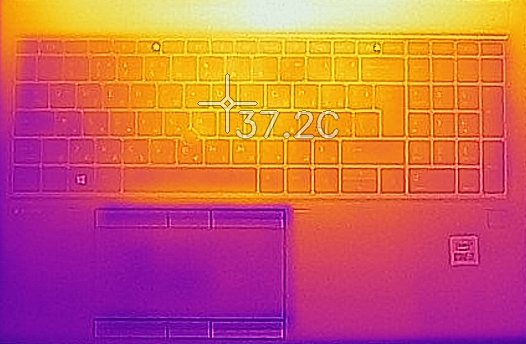
Verdict
Before we start summarizing our generally good impression of the HP ZBook Fury 15 G7, we would like to talk a bit about its underwhelming performance. No more than two weeks ago, we saw the ZBook Power G7, which should be a less-capable machine, but achieved a score in 3D rendering benchmark Cinebench R20 of about 20% higher than today’s contender. And with the same Core i7-10750H on board. Indeed, the ZBook Fury 15 G7 will also feature more powerful configurations, which will come with a Vapor Chamber cooling, but apparently, HP decided that the performance of their medium ground users is not of particular importance.
This is pretty significant to be overlooked, especially in the workstation industry. However, it is good to see that the laptop is feature-packed in every other department. Security? Check! Privacy? Check! Upgradability? Oh, you bet – this laptop has a total of four RAM SODIMM slots, which support up to 128GB of DDR4 memory (or 64GB of ECC RAM). Also, there are up to four M.2 PCIe slots, that can fit 10TB in total.
HP ZBook Fury 15 G7’s IPS panel (Innolux N156HCA-GA3 (CMN15F6)) in the configuration we tested has a Full HD resolution, comfortable viewing angles, good contrast ratio, and pretty wide color coverage (95% of the sRGB gamut). Moreover, its backlight doesn’t flicker above 120 nits, and below this value, the modulations are with very high frequency. If you are a content creator you would be happy to see that the color accuracy of this panel is pretty high thanks to our Gaming and Web design profile. Unfortunately, the color uniformity of our particular unit was not really homogenous, thus the laptop comes inappropriate for professional work.
Additionally, the battery pack delivers almost 17 hours of Web browsing, and 14 hours of video playback. And lastly, there is the comfortability of use, delivered by the great keyboard and touchpad combo. In fact, this is probably the best touchpad on a Windows laptop up to date. Plus, it looks brutal with the dual set of triple button array.
Last but not least, there is the I/O. You get everything you need with the addition of two Thunderbolt 3 connectors, an SD card reader, and a Smart Card reader.
Ultimately, this laptop has all it takes to be your next workstation. If it wasn’t for the poor performance, especially on the CPU side. We are not sure if this is because of the impotent cooling they put on less powerful iterations, or if the thermal paste application on our unit is bad, but the facts are indisputable.
Pros
- Up to 128GB of RAM and 10TB of storage
- Very good thermals
- Doesn’t use aggressive PWM (CMN15F6)
- 95% of sRGB coverage and good color accuracy with our Gaming and Web design profile (CMN15F6)
- Exceptional keyboard and touchpad combo
- Great battery life
- Thunderbolt 3, SD card and Smart Card readers + optional IR face recognition and fingerprint reader
Cons
- Our unit had poor CPU performance and temperatures
- Quite pricy
- Nonuniform color representation across the area of the display (CMN15F6)
You can check the prices and configurations in our Specs System: https://laptopmedia.com/series/hp-zbook-fury-15-g7/

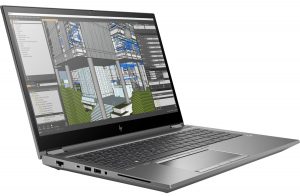
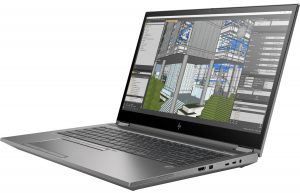
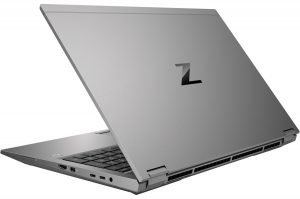
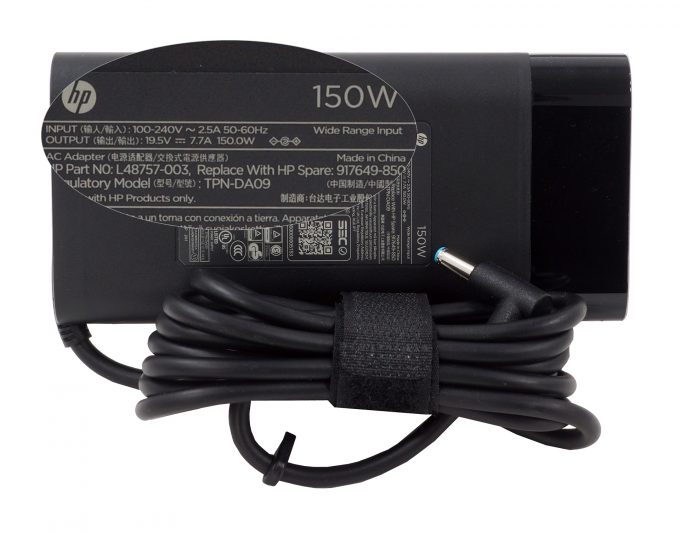
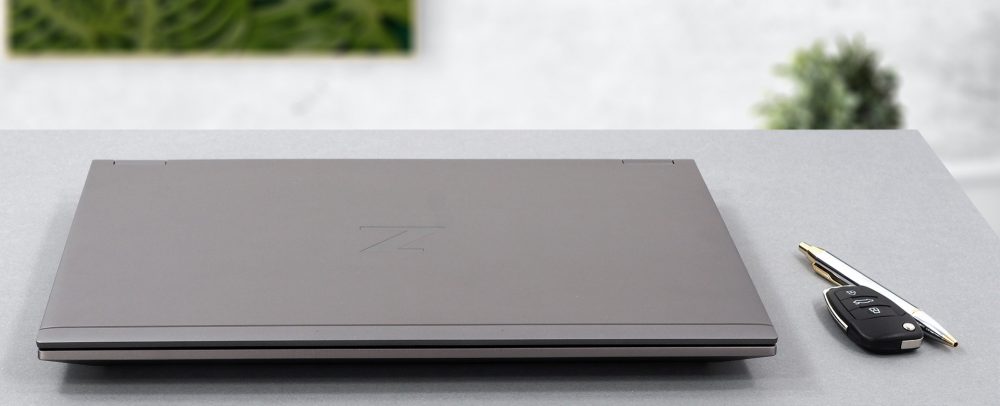
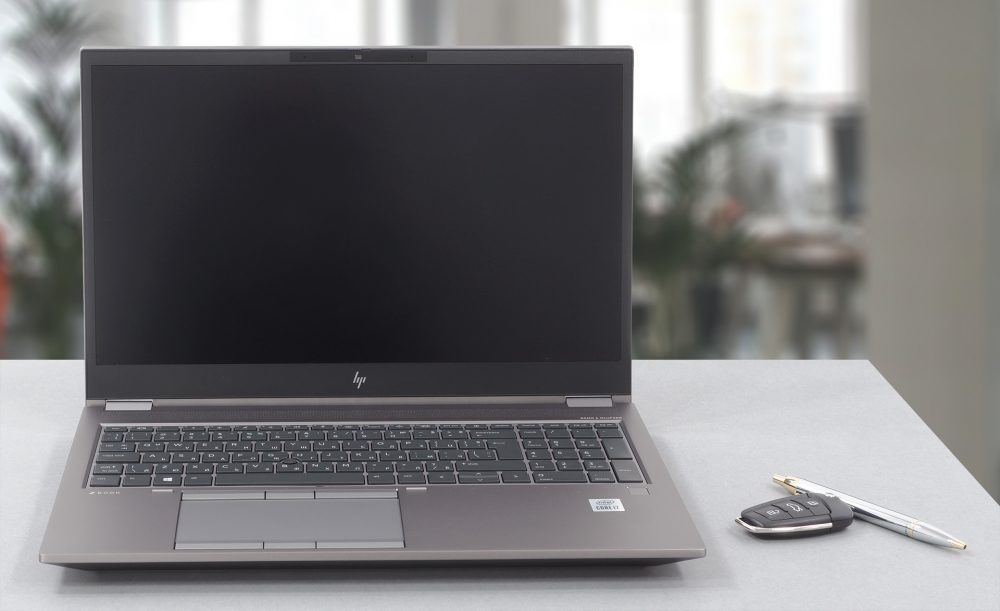
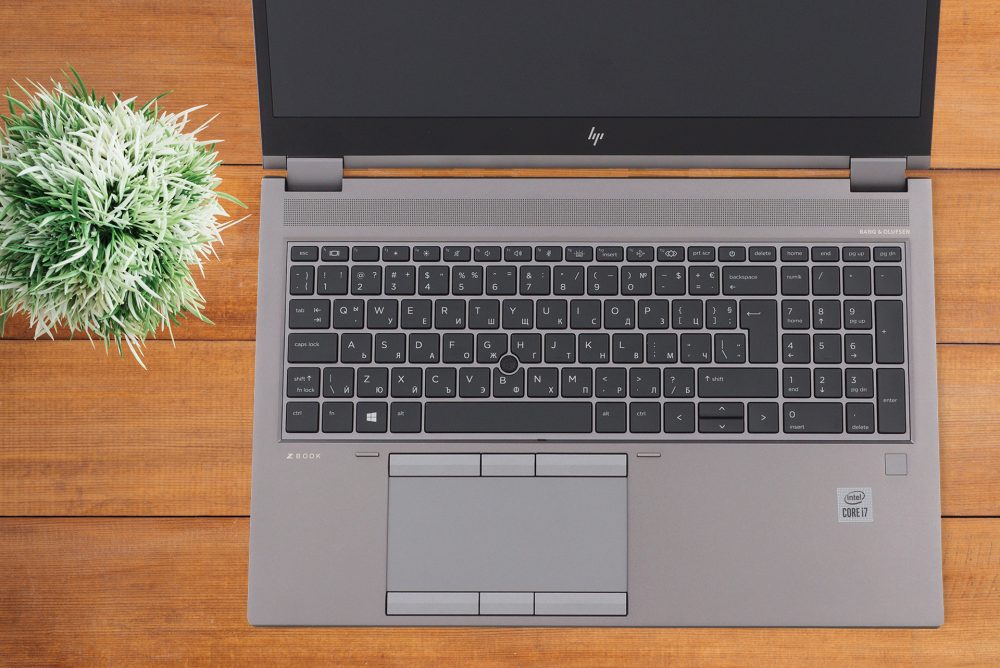
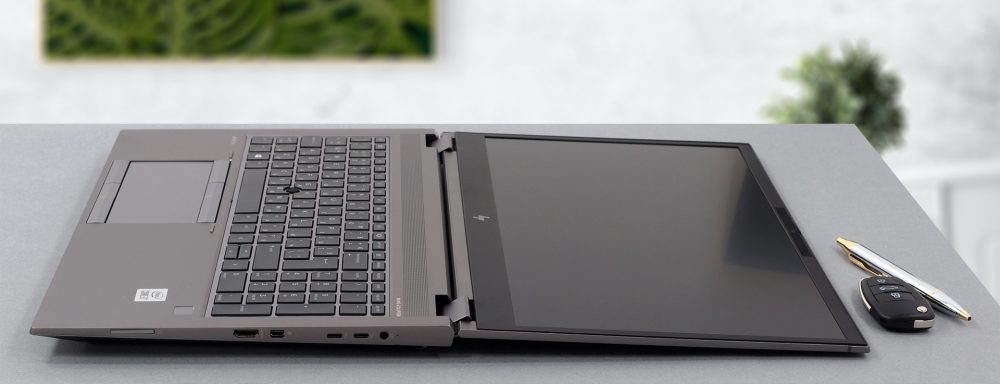
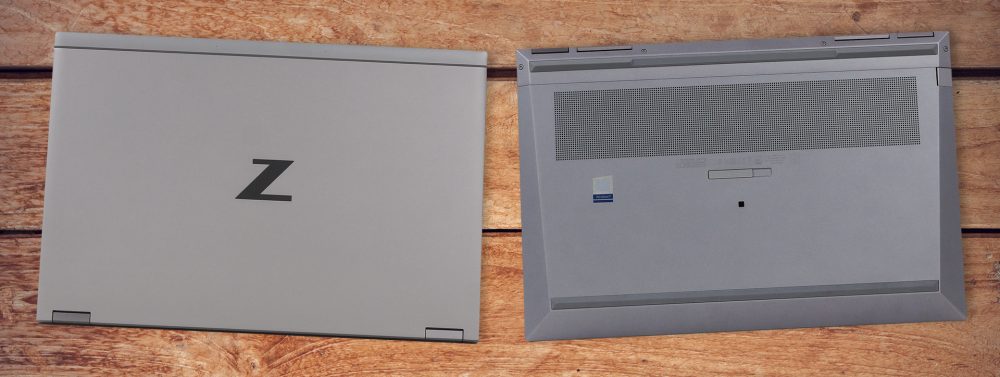



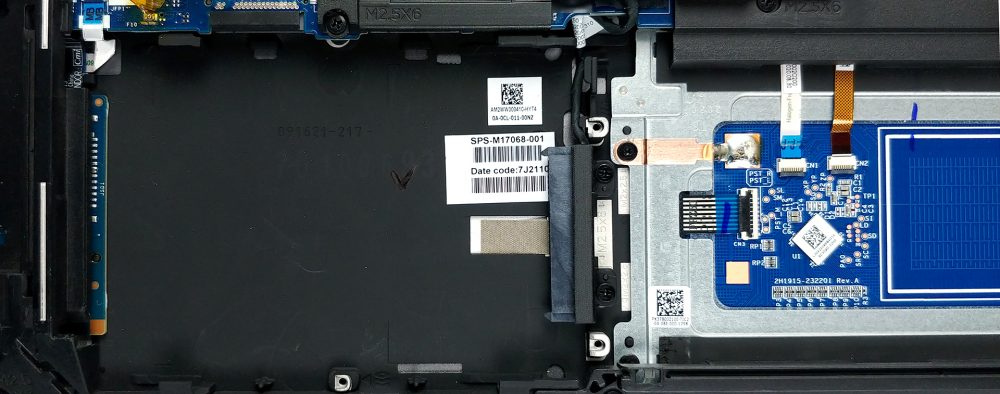
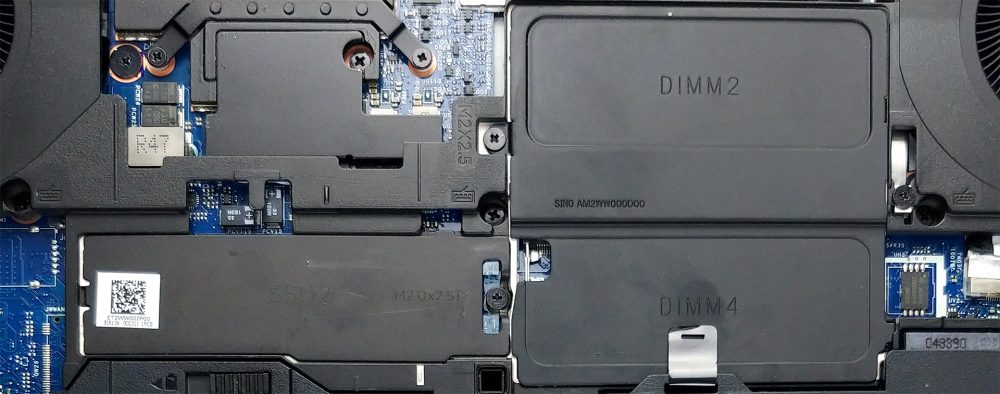
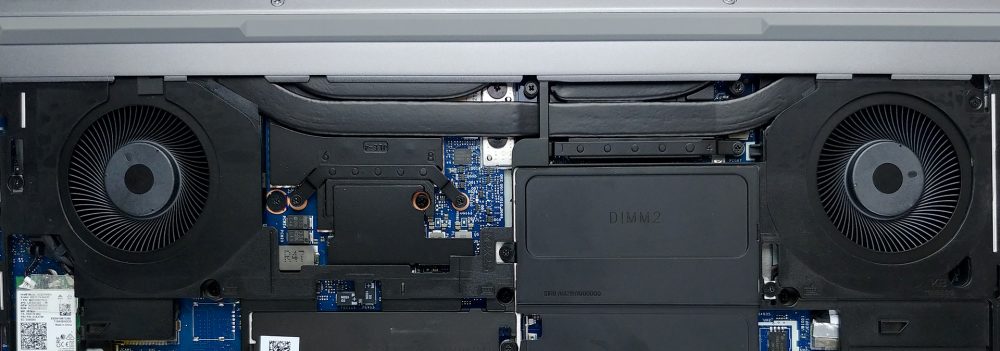

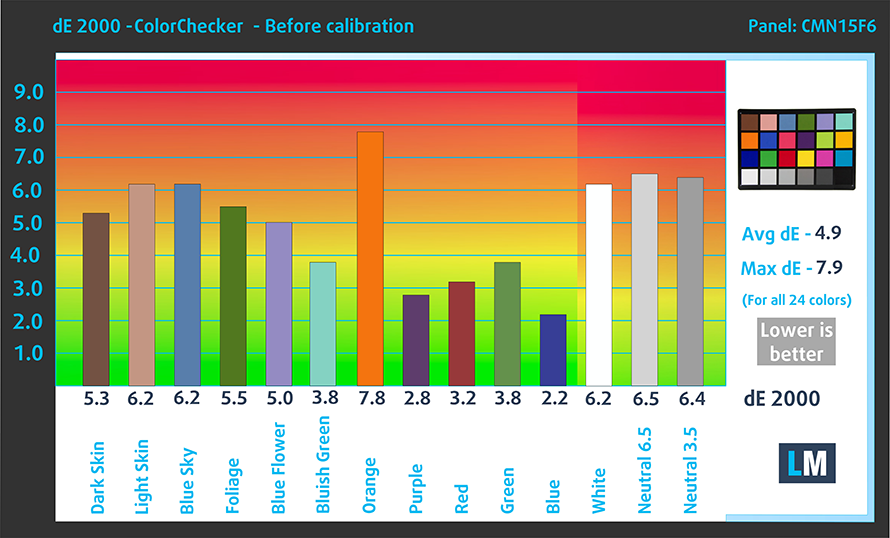
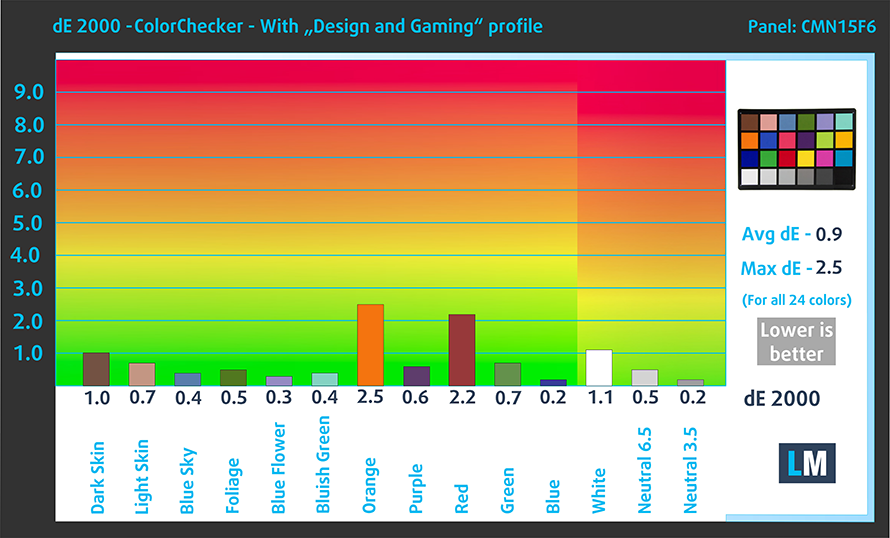

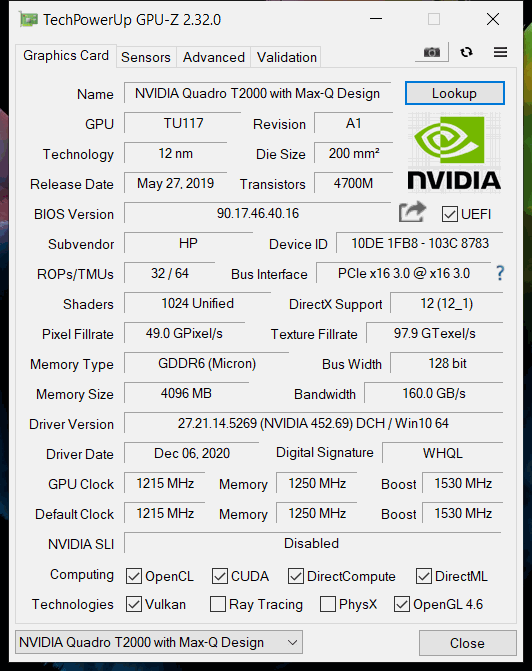







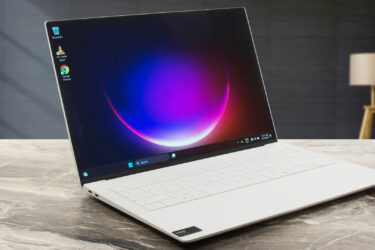
At this moment, simple BIOS update fully resolves the issue with performance.